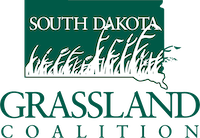Western South Dakota, which is generally drier, is greener than ever, while the east is experiencing a drought. What does this have to do with your pastures?
This year’s different weather patterns in western and eastern South Dakota have significant implications for pasture management.
HERE'S HOW IT CONNECTS TO THE DESCRIBED "TAIL OF TWO RIVERS" SCENARIO:
Forage Availability: The abnormally rainy conditions have resulted in lush green pastures in western South Dakota, which is normally dryer. Because pastures were dry earlier in the summer, ranchers may be tempted to graze this new vegetation. Eastern South Dakota, on the other hand, is experiencing drought, which is causing forage scarcity.
Fall Green-up: Cool-season grasses in the greener western region initiate new shoots during the fall green-up. These shoots are essential for storing energy reserves that will keep the grass healthy during the dormant season and stimulate rapid development the following spring.
Overgrazing Caution: The temptation to graze heavily on the new green grass in western South Dakota must be met with caution. Overgrazing during the fall green-up phase can have detrimental effects. If cool-season grasses are grazed too short, the growing point can be removed, hindering regrowth in the following season.
Soil Health and Erosion: Allowing sufficient plant height to persist into the dormant season is critical not only for the grass but also for soil health. It protects the soil surface from erosion, which can occur more easily when vegetation is too short.
